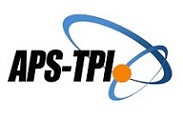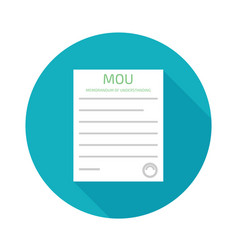Pengembangan Kuis Interaktif Nahwu Sebagai Media Pembelajaran Drill and Practice Pada Pembelajaran Nahwu Di Pondok Pesantren Salafiyah Putri Al-Ishlahiyah Malang
Abstract
Tujuan penelitian ini yaitu mengembangkan media pembelajaran drill and practice dalam bentuk kuis interaktif nahwu yang valid dan layak untuk digunakan peserta didik dalam pembelajaran. Tujuan dikembangkannya kuis interaktif nahwu adalah untuk memudahkan peserta didik mempraktikkan materi yang telah dipelajari. Materi yang dimuat adalah pokok bahasan “I’rob dan Tanda-tandanya”. Model pengembangan yang digunakan mengacu pada model pengembangan Lee & Owens yaitu meliputi, analysis (need assessment dan front-end analysis), design, development, implementation dan evaluation. Subjek penelitian pengembangan ini yaitu santri kelas Tahfidz Pondok Pesantren Salafiyah Putri Al-Ishlahiyah Malang. Kuis interaktif nahwu menyajikan 20 soal yang ditampilkan secara acak. Pengguna diberikan waktu 45 detik untuk mengerjakan tiap butir soal. Variasi bentuk soal mulai dari Multiple Choice, True/False, Hotspot, Multiple Response, Numeric, Matching, Drag the Words dan Select from Lists. Hasil uji validitas media yang diperoleh yaitu 85% dari ahli materi dan 95% dari ahli media. Sedangkan untuk hasil uji coba pengguna diperoleh rata-rata 93,5%. Dapat disimpulkan bahwa media layak untuk digunakan dan memperoleh respon yang baik dari pengguna.
Abstract
The purpose of this study is to develop drill and practice learning media in the form of interactive nahwu quizzes that are valid and appropriate for students to use in learning. The aim of developing interactive nahwu quiz is to make it easy for students to practice the material that has been learned. The material contained is the subject of "i'rob and its Signs". The development model used refers to the Lee & Owens development model which includes, analysis (need assessment and front-end analysis), design, development, implementation, and evaluation. The subject of this research development is students of the Tahfidz class of Salafiyah Putri Al-Ishlahiyah Islamic Boarding School in Malang. Nahwu interactive quiz presents 20 questions that are displayed randomly. Users are given 45 seconds to work on each item. Variation forms of questions ranging from Multiple Choice, True / False, Hotspot, Multiple Response, Numeric, Matching, Drag the Words and Select from Lists. The results of the media validity test obtained were 85% from material experts and 95% from media experts. As for the user trial results obtained an average of 93.5%. It can be concluded that the media is feasible to use and get a good response from usersKeywords
Full Text:
PDFReferences
Adiwisastra, M. F. (2015). Perancangan Game Kuis Interaktif sebagai Multimedia Pembelajaran Drill And Practice untuk Meningkatkan Hasil Belajar Siswa. Jurnal Informatika, 2 (1) 205-211. Retrivied from https://ejournal.bsi.ac.id/ejurnal/index.php/ji/article/view/67
Arikunto, S. (2009). Metodologi Penelitian. Jakarta: PT Rineka Cipta.
Arsyad, A. (2011). Media Pembelajaran. Jakarta: Rajawali Pers.
Buulolo, E. (2016). Aplikasi Pembelajaran Bahasa Nias Menggunakan Computer Asisted Instruction. Jurnal Infotek STIEKOM, 1 (1) 33-35. Retrified from https://www.researchgate.net/profile/Efori_Buulolo/publication/312496061_APLIKASI_PEMBELAJARAN_BAHASA_NIAS_MENGGUNAKAN_COMPUTER_ASISTED_INSTRUCTION/links/587f3deb08ae9275d4eccd85/APLIKASI-PEMBELAJARAN-BAHASA-NIAS-MENGGUNAKAN-COMPUTER-ASISTED-INSTRUCTION.pdf
Ghasemi, B., Hashemi, M., & Bardine, S. H. (2011). The Capabilities of Computers for Language Learning. Procedia - Social and Behavioral Sciences, 28 58 – 62. Retrivied from https://www.sciencedirect.com/science/article/pii/S1877042811024517
Handhika, J. (2012). Efektivitas Media Pembelajaran IM3 Ditinjau dari Motivasi Belajar. Jurnal Pendidikan IPA Indonesia, 1 (2) 109-114. Retrivied from https://journal.unnes.ac.id/nju/index.php/jpii/article/view/2127/2228
Heinich, R., Molenda, M., Russel, J. D., & Smaldino, S. E. (2002). Instructional Media and Technologies for Learning 7th Edition. New Jersey: Pearson Education.
Khasanah, N., Meimaharani, R., Listyorini, T. (2014). Build Educative Game as Tool Teaching Science Nahwu Jurumiyah for Android Based. ICETIA UMS, 283-288. Retrivied from https://publikasiilmiah.ums.ac.id/handle/11617/4985
Lee, W.W. & Owens, D.L. (2004). Multimedia Based Instructional Design Second Edition. San Fransisco: Pfeiffer.
Nikma, F. (2015). Panduan Belajar Bahasa Arab Otodidak Kitab 1: Nahwu. Turos Pustaka.
Ramdhani, M. A., & Wulan, E. R. (2012). The Analysis of Determinant Factors In Software Design For Computer Assisted Instruction. International Journal Of Scientific & Technology Research, 1 (8) 69-73. Retrivied from http://www.ijstr.org/paper-references.php?ref=IJSTR-0912-5373
Sahrah, S. (2017). Pembelajaran Nahwu DI Madrasah Quran Wa Al Hadits (MQWH) Pondok Pesantren Al-Aziziyah Kapek Gunungsari Kabupaten LOMBOK Barat. El-Tsaqafah Jurnal Jurusan Bahasa Arab, 16 (2) 189-210. Retrivied from http://journal.uinmataram.ac.id/index.php/eltsaqafah/article/view/451
Sanatun, N. A., & Sulisworo, D. (2016). Implementasi Metode Drill And Practice Secara Kelompok untuk Peningkatan Prestasi Belajar. Unnes Physics Education Journal, 5 (3) 67-71. Retrivied from https://journal.unnes.ac.id/sju/index.php/upej/article/view/13767
Smaldino, S. E., Lowther, D. L., & Mims, C. (2019). Instructional Technology and Media for Learning 12th Edition. New York: Pearson Education.
Sundari, A., Suyatna, A., & Sesunan, F. (2015). Pengembangan Kuis Interaktif Tipe Multiple Respone untuk Melatih Kemampuan Eksplorasi Fenomena Fisika. Jurnal Pembelajaran Fisika, 3 (1) 69-79. Retrivied from http://jurnal.fkip.unila.ac.id/index.php/JPF/article/view/8083
Warsita, B. (2008). Teknologi Pembelajaran, Landasan dan Aplikasinya. Jakarta: Rineka Cipta.
DOI: http://dx.doi.org/10.17977/um038v2i32019p203
Refbacks
- There are currently no refbacks.
Copyright (c) 2019 Ana Mualimah, Henry Praherdhiono, Eka Pramono Adi

This work is licensed under a Creative Commons Attribution-ShareAlike 4.0 International License.
JKTP: Jurnal Kajian Teknologi Pendidikan published by Department of Educational Technology, Faculty of Education, State University of Malang in Collaboration with Asosiasi Program Studi Teknologi Pendidikan Indonesia (APS TPI).
Publisher Address:
Lab. Teknologi Pendidikan, Gd.E2, Lt.1
Fakultas Ilmu Pendidikan Universitas Negeri Malang
Jl. Semarang 5, Kota Malang Email: jktp.fip@um.ac.id
========================================================================================================
| INDEXED BY | TOOLS | PLAGIARISM CHECK | ARTICLE TEMPLATE |
|
|

JKTP: Jurnal Kajian Teknologi Pendidikan is licensed under a Creative Commons Attribution-ShareAlike 4.0 International License.
JKTP Statistics (Since July 13th, 2020)





.png)












